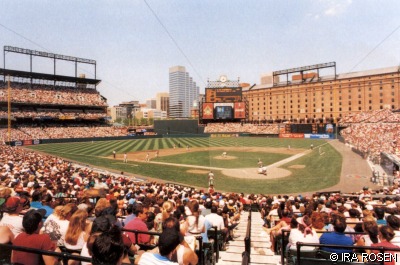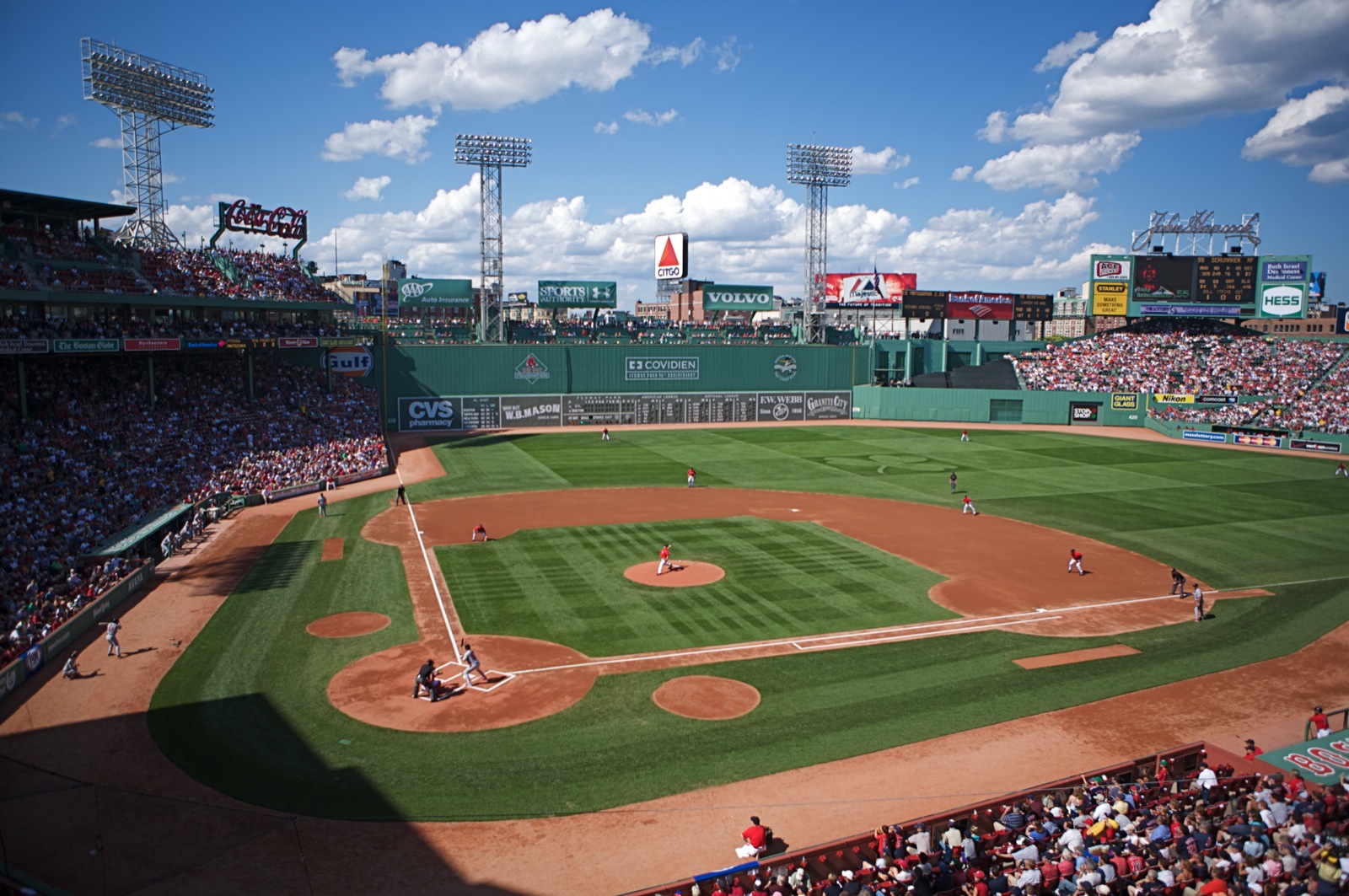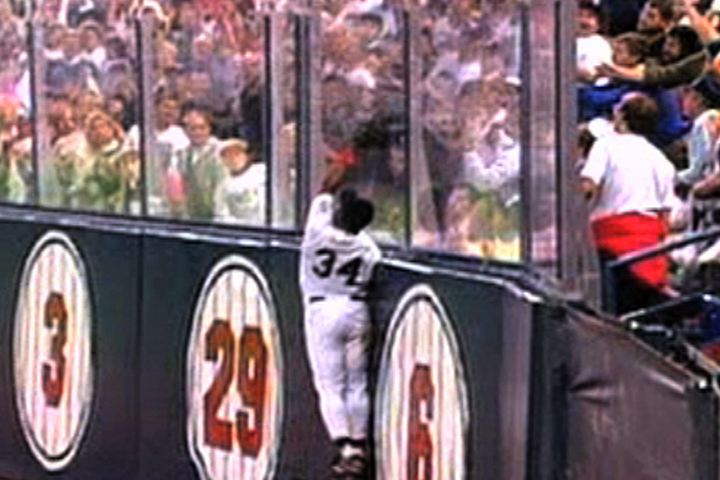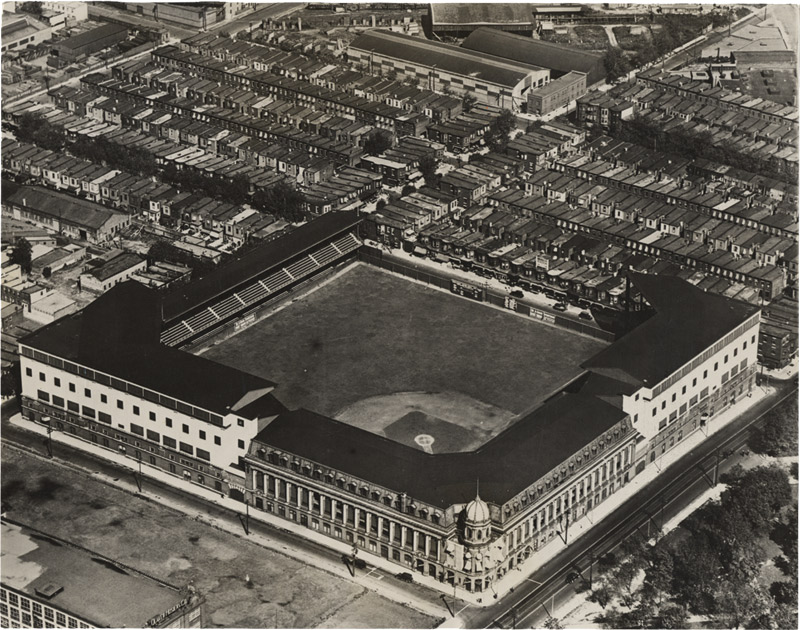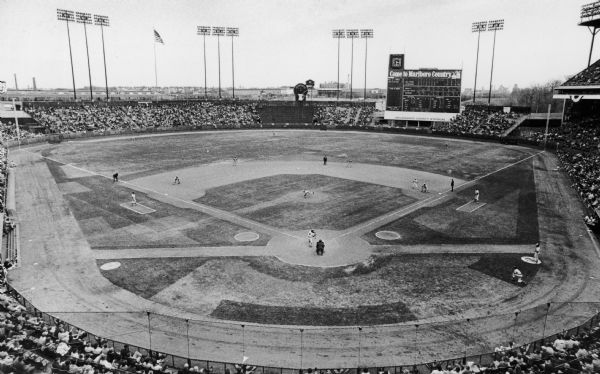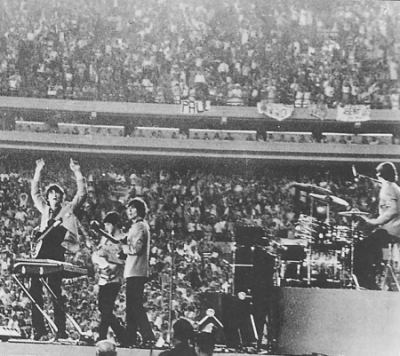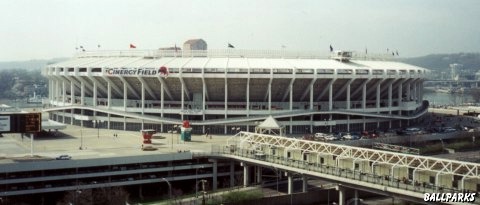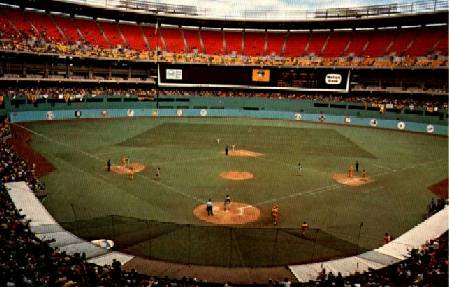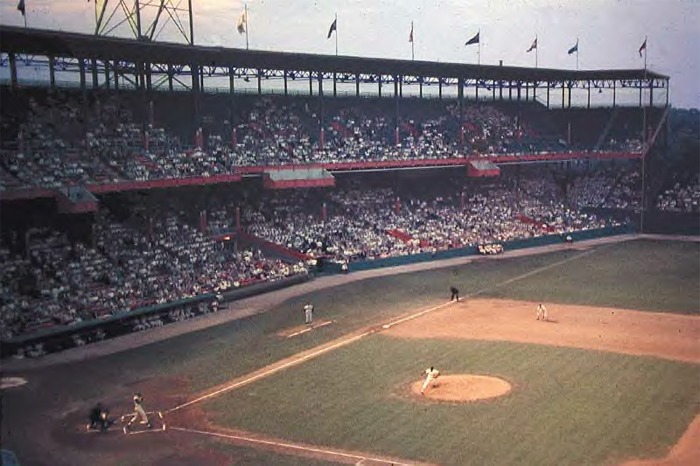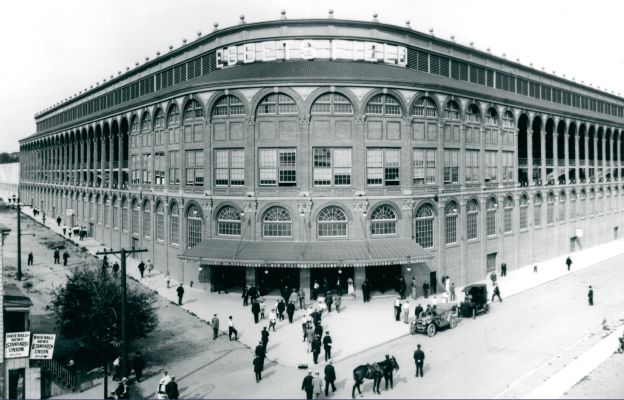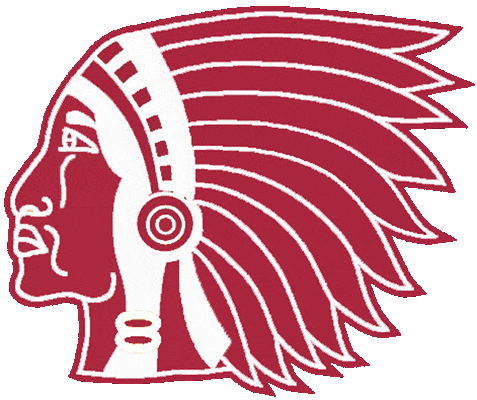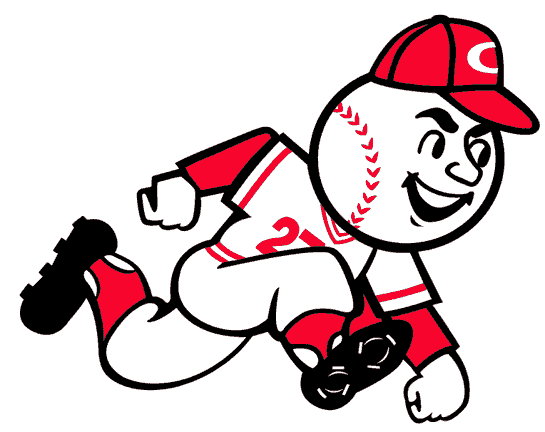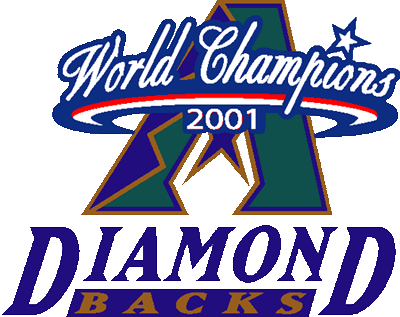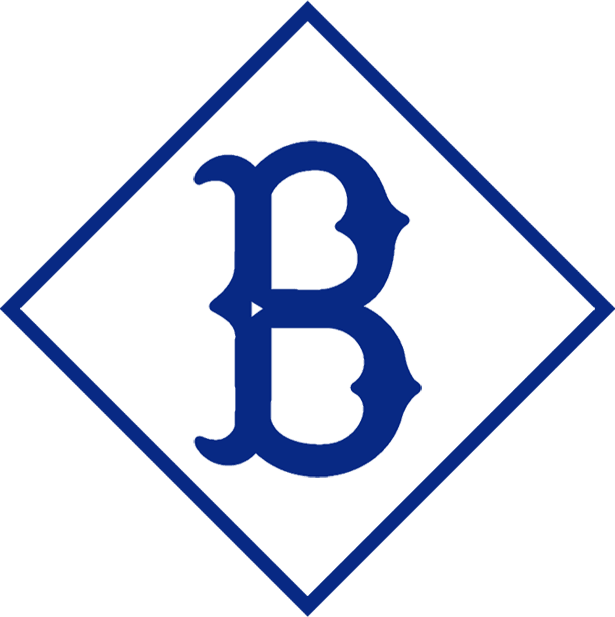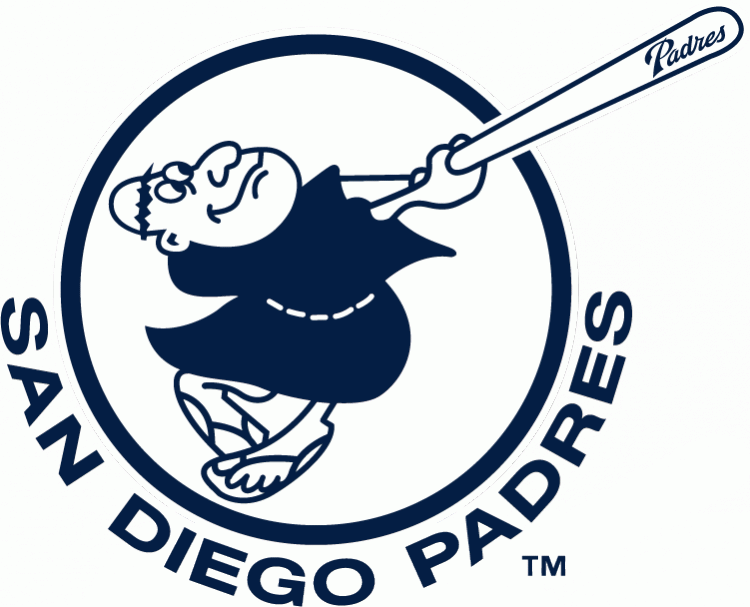American League East:
Baltimore Orioles
The Baltimore Orioles started as the Milwaukee Brewers (as you may remember from the article following the origin of team names) in 1901 with the birth of the American League. Their games were played on Lloyd Street Grounds in Milwaukee. The park was located on current North 17th Street. The Brewers played their one year in the league at this park and had very little success. They went 48-89 and finished 8th out of 8 teams. As we saw in the article discussing team names, the league was still searching for consistency and after the failed year in Milwaukee the team moved to St. Louis and became the Browns.
The Browns played at Sportsman's Park in St. Louis. It was their home from 1902 through 1953, their final year in St. Louis. For most of that time they shared the park with the Cardinals. This Sportsman's Park was officially known as Sportsman's Park II. It was an exact replica of Sportsman's Park which had been the home of the Cardinals which was destroyed by fire. The condition of the field was atrocious and visiting teams dreaded playing there. The two teams did end up pouring more money into the stadium and added seating, crucial to accomodate the Cardinals fans but leaving a lot of extra empty seats for the Browns. The Browns were often in debt and non competitive The Cardinals were clearly the more successful team, and the more profitable. The Cardinals ended up buying the stadium and renaming it Budweiser Stadium followed by Busch Stadium. The Busch name was in honor of Augustus Busch, owner of the Cardinals. The Browns left the city in 1953 for Baltimore.
The Browns, now known as the Orioles, moved into Memorial Stadium. The stadium was not built specifically for the Browns. It had existed since the 1920's and was built in the Venable Park area of the city and was known originally as Baltimore Stadium or Municipal Stadium. The stadium was originally a football stadium for college football but when the minor league Orioles stadium had a fire in 1944 they needed a place to play so Baltimore Stadium was converted to accomodate baseball. When the Browns moved to Baltimore they moved in. Baltimore Stadium was rebuilt based on the success of the minor league Orioles and in 1950 was reopened as Memorial Stadium in honor of World War I and World War II veterans. The main entrance to the stadium displayed a dedication to the veterans. It was also sometimes called "Babe Ruth Stadium" after Ruth's connection with the city. The Orioles won three World Series while playing in this stadium (1966, 1970 and 1983) as well as participating in another three (1969, 1971 and 1979). The Orioles had a successful run at that time winning additional division titles in 1972 and 1974. The stadium also saw some terrible times including the 0-22 start for the O's in 1988. When the Orioles made a drastic turn around in 1989, losing to the Blue Jays on the final weekend of the season, they did it in this stadium.
The stadium was old, decaying and smelly. The parking was terrible and the neighborhood started to get a bad reputation. The team had a decision to make: pour money into this museum or take advantage of the rejuvenated Inner Harbor area and build a new stadium designed just for baseball. The result was Orioles Park at Camden Yards. Built on the site of the old Baltimore and Ohio Railroad warehouses and just two blocks from the birth place of Babe Ruth, the stadium has become the bench mark for new baseball stadiums. The proximity to the harbor, the use of shops and restaurants on Eutaw Street and the incorporation of the Warehouse Buildings as targets for long ball hitters has made Camden Yards the pinnacle of baseball architecture. Camden Yards is often credited as the first "modern" ballpark. It ended the cold, faceless multi-purpose trend that had been set by Veteran's Stadium, Riverfront Stadium and Three Rivers Stadium. Many ballparks built after the opening of Camden Yards in 1992.
Boston Red Sox
The Boston Americans opened play at the Huntington Avenue Grounds in 1901. The site was originally a circus grounds and the quirks certainly made it seem like anything but a baseball park. The grandstands were wooden (standard for that day), there were sand pits in the field where the grass was unable to grow, there was a tool shed in the middle of the outfield and there was no outfield wall. The overflow crowds were often placed in the outfield (literally standing room only) and a rope was strung across the outfield. Crazy as the set up was, it was the site of the 1903 World Series, the first World Series. This was the home of the American League Boston team until 1911.
For the 1912 season opener the Boston team, now known as the Red Sox, opened a new stadium. Planned as a festive event, the opener was a bit sombre as the stories of the recent sinking of the Titanic were still trickling in to news rooms. Despite that tragedy the Red Sox opened Fenway Park in 1912 and christened it with a World Series title. The name Fenway comes from the section of Boston where the stadium is located. The fens (wetlands) had been filled in several decades before and the Fenway Construction company was owned by the owner of the Sox. The glory days of the Red Sox took place in the early days of the stadium with World Series wins in 1912, 1915, 1916 and 1918.
Similar to the Huntington Avenue Grounds, Fenway had some pretty significant quirks. The first was that the left field wall was 37 feet high. When the park opened in 1912 there was an incline in front of the wall. The incline was hazardous to visitors but the Red Sox left fielder Duffy Lewis learned to play the incline to perfection. The same way Carl Yastrzemski would perfect playing the ball off the wall years later, Duffy Lewis could play the incline and would even use the incline to add momentum to his throws toward the infield. Because Lewis mastered the hill it became known as Duffy's Cliff. It was removed in 1933.
Left field is the more famous section of the park but right field has it's own quirks. The foul pole in right field is named after Johnny Pesky. Although Pesky was not a home run hitter he did wrap one game winning shot around the pole that bears his name.
The bullpens located in right field (the ones that Torii Hunter flipped over and Carlos Beltran ran into in the 2013 post season) are known as "Williamsburg". The bullpens were placed out there to shorten the right field porch where Williams hit most of his Home Runs. Speaking of Williams Home Runs, the right field stands have one seat painted bright red. That seat is where Ted Williams hit his last career Home Run.
Fenway has seen more special moments than most stadiums. All Star Games. Yankee-Red Sox battles. World Series. Famous Home Runs. You name it, Fenway's seen it.
New York Yankees
As you may remember from the article detailing the team names, the Yankees started out as the Baltimore Orioles. They played their games at Orioles Park. There had been several incarnations of the Orioles in previous leagues at different Orioles Parks. This one, the fourth version of Orioles Park, was called Orioles Park IV. The team played there for the first two years but after John McGraw and half the team jumped to the New York Giants, the organization could no longer field a team and the franchise was moved to New York.
McGraw and the Giants owners fought tooth and nail to keep the former Orioles from invading New York and used their political power to block any attempt the team made to buy land for a stadium. Finally, just a few weeks before opening day, the team found their location. It was high on the hills in the Washington Heights section of New York and was known as Hilltop Park. It is the current sight of the Columbia Presbyterian Hospital. The team name became alternately the Hilltopers or the Highlanders based on the location. The park was poorly constructed, slapped together at the last minute, and did not last long.
By the end of 1912 the team was playing at the Polo Grounds as the guest of John McGraw and the ownership group that had fought so hard to keep the franchise out of the city. As it became clear that the team was a joke and had no chance to compete with the powerful Giants dynasty, McGraw's hatred dissipated. No longer playing at Hilltop Park the Highlanders name no longer fit so the team became known as the Yankees. They shared the Polo Grounds with the Giants until 1922. The franchise's first two World Series appearances (1921 and 1922) were in this stadium. Ironically, these two appearances led directly to their new home.
When the team moved into the Polo Grounds they were pathetic, rarely finishing above fourth. By 1919 the team had the best player in the game, Babe Ruth, and were challenging for a title. As Ruth grew in popularity the Yankees filled the stadium and McGraw had a real rival on his hands. When the Yankees actually faced off against the Giants in the World Series two years in a row McGraw had enough. He kicked the Yankees out following the 1922 season. The Yankees built their own stadium, at the time the biggest and best stadium ever built. Since Ruth's success had spurred McGraw to kick the team out and the same success had given the team the money to build their own stadium, it became known as the house that Ruth built. Officially it was known as Yankee Stadium. The Yankees faced the Giants in the World Series for the third straight year and in their first year in the new stadium the team won their first World Series title.
The stadium remained mostly unchanged until the end of the 1973 season when the stadium underwent major renovations. For the 1974 and 1975 season the Yankees shared Shea Stadium with the Mets as their home base. The stadium reopened in 1976. The last ten years of the original stadium were bad years but with the reopening of the stadium the Yankees made the World Series, losing to the Big Red Machine in the 1976 World Series. They came back the next two years and won the 1977 and 1978 World Series. All in all, the original Yankee Stadium (pre and post renovations) would host 26 of the team's current 27 World Series titles.
The renovated Yankee stadium remained in operation until 2008. In the final season of the original Yankee Stadium the Yankees missed the playoffs. It was the first time since 1994 that the team had not made the post season. The New Yankee Stadium, opened in 2009, brought an immediate continuation to the Yankee mystique. The Yankees won the 2009 World Series over the Philadelphia Phillies (the second time the Yankees have beaten the Phillies in the World Series) adding the team's 27th World Series title.
Tampa Bay Rays
The Tampa organization is the baby of the American League. The organization started play in 1998 and has played at Tropicana Field the entire time in the league. The stadium is a dome but has some defining characteristics. Upon entering the stadium fans walk through an ornate rotunda, reportedly inspired by the Dodgers' Ebbets Field in Brooklyn.
Just over the right-center field wall is a water tank that contains live Sting Rays. In the left field corner the wall makes some odd height changes. This angle played a part in the 2011 playoffs as Evan Longoria hit a Home Run just over the wall. Had it been hit a few feet farther to the right, the ball would have been off the wall. Instead the ball went over the wall, knocking the Red Sox out of the playoffs, ending the Terry Francona era in Boston.
The ceiling of Tropicana field can change the outcome of games as well. As the ceiling ascends there are four rings of catwalks. The catwalks are labelled A, B, C and D. D is the lowest level, A is the highest. A ball hit in the air in fair territory which strikes the A or B ring is still considered in play. A ball hit in the air in fair territory which strikes the C or D ring is a Home Run.
Toronto Blue Jays
As you may remember from the article on Disney Baseball, Toronto very nearly won the first American League Expansion Franchise in 1961. Instead they had to wait for 1977 to enter Major League Baseball. In a country (and city) known best for hockey, the Blue Jays played baseball in a stadium that was designed for football. Exhibition Stadium was originally used for Canadian football and was the home of the Toronto Argonauts in the CFL. The Stadium was modified in time for the Blue Jays to play their first game in 1977. Although Toronto summers bring beautiful weather, there should be no surprise that April and late September games caused serious weather problems when playing out doors in Toronto. As if the weather wasn't enough, the proximity to Lake Ontario caused more problems. The offer of dropped pop corn and hot dogs attracted seagulls in droves. This led to one incident where a fly ball hit by Dave Winfield hit and killed a seagull during a game. Clearly the stadium, with poor sight lines and some seats over 800 feet away from the action (they were great seats for a football game) something had to be done.
Photo of Exhibition Stadium Courtesy of Toronto Blue Jays.com. In this wide shot you can see the left field stands extending perpendicular to the outfield wall making it difficult to see the action.
After spending their first decade plus in the poor baseball grounds of Exhibition Stadium, the Blue Jays went in a completely opposite direction. Since the summers in Toronto can be beautiful, they didn't want to lose the beauty of outdoor baseball. Yet, knowing that the Toronto weather could lead to snow and wind they knew they needed a dome. So they did what Walter O'Malley had wanted to do before leaving Brooklyn. They built a stadium with a retractable roof.
Skydome officially opened in June 1989 with a nation wide broadcast to celebrate the new amazing feat of architecture. On the day of the opening ceremony Toronto sat in 6th place, 8 games out of first. They were playing on the road the day of the big broadcast but their first game at the new home came on June 5, a 5-3 loss to the Brewers led by Paul Molitor, Gary Sheffield and a two run Glenn Bragg Home Run. By June 21 the Jays had flown as high as second place (in fact they jumped from fifth to second over night in a tightly packed middle of the division. Although they climbed to second they were still seven games behind the first place Orioles.
Toronto did not exactly catch fire but the Orioles certainly fell apart. The Jays steadily cut the lead and by 8/31 the two teams were tied. The last weekend of the season was a head to head showdown at the brand new Skydome with the Orioles. The first place Blue Jays were one game ahead of the second place O's. The team that won the series would win the division. The Jays won the first game putting them up two games with two to play. The second game, on Saturday, became the crucial one. Baltimore took a 3-1 lead into the bottom of the 8th. A three run bottom of the 8th (2 walks, a sac bunt, two singles and a sac fly) gave Toronto the lead and the division, in their first summer in the new stadium.
Skydome would become remembered for the glory days of Blue Jay baseball. The stadium was home to two World Series titles, including the most famous Blue Jay moment, Joe Carter's walk off World Series winning Home Run. Although the name of the stadium has since been changed to Rogers Center the building is still the same. Included in the stadiums attractions are a hotel, restaurant and a bowling alley.
American League Central:
Chicago White Sox
The Chicago White Sox were one of the original eight American League franchises but they started their existence by moving into a second hand park. The South Side Grounds (officially South Side Grounds III) was built as a cricket field in 1893 and when the White Sox moved into town Charles Comiskey added the grandstands and bleachers that made it a major league park. The White Sox played here until part way through the 1910 season. During their time there the 1906 Hitless Wonders fought the Cubs in the first ever same city World Series.
The biggest problem with South Side Grounds was the wooden construction. As stadiums like the Polo Grounds and Columbia Park in Philadelphia suffered fires, teams wanted to move to concrete and steel construction. Just a few short months after Ben Shibe opened his modern miracle (see the Oakland Athletics) Comiskey opened his new palace. Comiskey Park.
On July 1, 1910 the park, officially known as White Sox Park for the first two years, opened with a Sox loss to the Browns. It was said that the park was designed as a pitcher friendly park to help pitcher Ed Walsh, the star of the team at the time. White Sox pitchers who threw there over the years would likely disagree that it was pitcher friendly.
The stadium name changed to Comiskey Park in 1913 and Comiskey began building a team that he thought would keep him competitive for years to come. he collected players like Eddie Collins, Buck Weaver, Joe Jackson, Happy Felsch, Ray Schalk, Eddie Ciccotte and Lefty Williams. This group won the 1917 World Series and were heavy favorites entering the 1919 World Series. Both of these World Series were played in part in Comiskey Park. Following the 1919 World Series and the disgrace of the Black Sox the stadium would see very little competitive baseball.
Between 1921 and 1951 the team finished higher than fifth only six times (never higher than a distant third). The team outlook was often bleak until 1952 when they were continuously fighting in the top three spots with the dominant Yankees and Indians. In 1959 Comiskey Park hosted its first meaningful games in 40 years. The White Sox made the World Series.
In game one the White Sox, known as the Go Go Sox, crushed the exhausted Dodgers 11-0 (Los Angeles had to play a tie breaker against the Milwaukee Braves and fly from Los Angeles to Chicago overnight). It was the first World Series game in Comiskey Park since October 1919. Game Two would not go quite as well for the home team. They lost 4-3 thanks to a pinch hit Home Run by Chuck Essegian and a two Home Run game by Charlie Neal. The stadium did see one final game in the 1959 World Series but thanks to Essegian's second pinch hit Home Run of the series, a two run double by Charlie Neal, a two run Moon Shot by Wally Moon and a two run Home Run by Duke Snider (the last World Series home run of his career) the Dodgers won their first World Series in Los Angeles.
Comiskey Park did see one more playoff run in 1983 as the White Sox led by Carlton Fisk, LaMar Hoyt, Richard Dotson and Harold Baines fell to Cal Ripken and the eventual World Series Champion Orioles. Two of the four games in that series were played at Comiskey Park but neither was a happy occasion. The Orioles won game three 11-1 and game four 3-0 to advance to the World Series.
The original Comiskey Park saw its final game at the end of the 1990 season and was demolished in 1991. It was replaced by a new stadium, known as New Comiskey Park, for the 1991 season. The new park, now known as US Cellular Field since 2003, has already seen its fair share of special moments. The White Sox have made the playoffs four times since the opening of the stadium. Most importantly, the 2005 version of the Pale Hose won the first World Series for the organization since the 1917 team.
Cleveland Indians
League Park officially opened in 1891 and was used by the Cleveland Spiders of the National League. When the Cleveland Blues became a flagship organization for the American League, they played at League Park.
The team played there officially until 1931 although for a time it was named Dunn Field after the owner of the team. During their time in the stadium the Indians won their first World Series in 1920. Cleveland legends Cy Young, Tris Speaker, Nap LaJoie, Joe Jackson, Terry Turner and Ray Chapman played at this stadium.
In 1932 the Indians moved into the new Cleveland Municipal Stadium (also referred to as Cleveland Stadium and Lakefront Stadium). Built originally for the Cleveland Rams of the National Football League and later used by the Cleveland Browns, the Indians played here from the 1930's through the 1990's. Games 3, 4 and 5 of the 1948 World Series were played here as the Tribe won their second (and so far last) World Series title.
Players and fans complained about the stadium and felt it led to the team's poor performance as the outfield was large and it was felt this cut down on Home Run production. The stadium did see one more World Series in 1954 but the Indians lost to Willie Mays, Dusty Rhoades and the Giants. Between 1954 and 1994 there were few great moments at the stadium (for baseball that is) although Frank Robinson did take the field as the first African American Manager in this stadium, it hosted an All Star Game and Len Barker pitched a perfect game here.
In 1994 the Indians opened Jacobs Field and immediately the Indians saw a stretch of competitive play the team had never experienced before. In Jacobs Field the Indians made the playoffs 8 times including two World Series (1995 and 1997).
Detroit Tigers
The Detroit Tigers have played in the same city under the same name since 1901. Their uniforms have changed, their stars have changed and their stadium has certainly changed since then. In their first two years they had one stadium for regular games and a second stadium for Sundays and special occasions.
The Sunday park was known as Burns Park. It was named after one of the owners of the team. The other park, the everyday park, was located at the intersection of Michigan Avenue and Trumbull Street. It was originally known as Bennett Park after the owner of the team and it hosted the World Series in 1907, 1908 and 1909 (all Tigers losses). The team remained relatively competitive and the team was taken over by Frank Navin when Bennett passed away.
The stadium name was changed to Navin Field in 1912 and was known that way until 1938. During that time the team struggled but it did see several World Series teams led by Hank Greenberg and Schoolboy Rowe. In 1938 with the death of Navin, Walter O. Briggs took over the team and the stadium was changed to Briggs Stadium. From 1938-1960 it was called this and although the team won the 1945 World Series (it also lost the 1940 World Series) while playing here, there were few other bright moments as the Yankees dominated the era.
In 1961, again under new ownership, the stadium finally got the name that made sense: Tiger Stadium. During the final stretch of the stadium the field saw the 1968 and 1984 World Series titles. It also saw Reggie Jackson hit a ball that nearly left the stadium and Cecil Fielder come out of nowhere to blast 49 Home Runs (the closest anyone had come to 50 in years). The stadium saw its final game in 1999.
The new millennium brought a new stadium, Comerica Park. It was pitcher friendly to say the least and though the Tigers made a big trade to bring slugger Juan Gonzales to town the large ballpark made the offensive power irrelevant. The lack of offense gave the park the nickname of "Coma Park". The first few years here were not happy and included a near historic worst 43-119 record in 2003.
Since then the team has turned around and the park has seen some historic moments including Placido Polanco galloping around the bases in the 2006 ALCS, Miguel Cabrera winning a Triple Crown, Justin Verlander no hitters and two World Series.
Kansas City Royals
While the American and National Leagues remained consistent in geography during the first 50 plus years of existence, Kansas City was considered minor league. Their minor league Kansas City Blues started play in 1923 in Muehlbach Stadium, named after the team's owner. Also utilizing the stadium were the Negro Leagues' Kansas City entry the Monarchs. The Monarchs were one of the more successful teams in the league and through their history (from 1920-1950) would feature players like Jose Mendez, Bullett Rogan, Turkey Stearnes, Cool Papa Bell,Satchel Paige, Connie Johnson, Hank Thompson, Hilton Smith, Buck O'Neil and Jackie Robinson.
In the late 1930's Muehlbach Stadium was renamed Ruppert Stadium after Jacob Ruppert, owner of the Yankees. Ruppert bought the Blues and used it as part of the Yankee farm system. It was one of the main training grounds for years during the great Yankee dynasties. The stadium was also used for NFL football in the early 1920's and again in the 1960's for the Chiefs.
When the Athletics brought major league baseball to Kansas City they started here, at what was called Municipal Stadium by that time. To accomodate the big league baseball, renovations were made and the scoreboard from Braves field in Boston (now abandoned with the Braves in Milwaukee) was brought to Municipal Stadium. When the Athletics moved to Oakland the stadium sat empty for a season until the Royals joined the league in 1969. The Royals used the stadium until the end of the 1972 season. Although only there for a few years, the Royals sent several memorable players onto the field in the hometown uniform at Municipal Stadium. Among them were Lou Piniella, Jerry Adair, Galen Cisco, Dick Drago, Wally Bunker, Buck Martinez, Amos Otis, Buck Martinez, Freddie Patek, John Mayberry and Paul Splitorff.
In 1973 the Royals moved into a new stadium called, what else, Royals Stadium. The team had not been good since entering the league. In fact many felt they were still a minor league affiliate for the Yankees since many of their players ended up in New York eventually. Although they had finished second in 1970, they were still 16 games out of first place. The move to the new stadium coincided with a new era in Royals baseball as the team became competitive adding players like Kurt Bevaqua, Hal McRae and George Brett.
The team continued to improve and the stadium saw it's first competitive Major League Baseball in the first year as the Royals finished only 6 games out of first. Seen as an up and coming team, the Royals fell off in 1974 to fifth place as the Oakland A's dominated the west. Just as the Royals followed the A's into the town, they followed the A's into the top of the division and won the west in 1976, 1977 and 1978. The Royals played in their only two World Series appearances at Royal Stadium. In 1993 the stadium was renamed Ewing Kauffman Stadium after the long time owner of the team.
The stadium has some truly amazing features and has seen many great moments. In center field is a beautiful fountain not seen in any other stadium. The stadium also features a Buck O'Neil legacy seat where O'Neill used to attend the games. The seat is awarded each game to a member of the community that best represents O'Neill's legacy.
Minnesota Twins
It is often forgotten that the Minnesota Twins are one of the original franchises of the American League. They began as the Washington Senators in 1901 and played at American League Park. For their first two years in the league the Senators played in this non descript stadium. It was fitting since they played non-descript baseball.
Starting in 1903 the team moved to National Park, former site of the Georgetown Hoyas football games. Until 1911 the team continued to live in the American League basement while occupying this stadium. Bleachers lined the first and third base lines and there was standing room in the outfield (similar to the Red Sox at the Huntington Avenue Grounds) but no outfield wall to speak of. In March of 1911 the stadium had a serious fire and the wooden bleachers were nearly destroyed. (Probably symbolic of the play of the team, the fire was reportedly started by a plumber). After the cathedral of Shibe Park (see Oakland) set the new standard with steel and concrete stadiums, the Senators followed the trend. Construction was an ongoing process and although the team was playing in the construction site, the construction was completed on July 24, 1911. The newly rebuilt Griffith Stadium, named after owner Clark Griffith and located at the same site, was officially opened. The Senators would play in Griffith Stadium until the team moved to Minnesota to start the 1961 season.
The first home in Minneapolis was Municipal Stadium. The Stadium certainly served the intended purpose as the city built the stadium with the hopes of luring a big league team to the area. Summers in Minnesota can be beautiful but April and late September or early October can sometimes be reminiscent of football, not baseball. Regardless, the Twins took over the stadium in 1961 and appeared in the city's first World Series just a few years later. They lost to the Dodgers in Game 7 at the stadium in 1965. The stadium was also used by the NFL's Minnesota Vikings when they entered the league and used the poor weather to their advantage.
The stadium was not kept up and the quality of the structure began to decay. The Twins and Vikings considered leaving town but just as the Senators had followed the lead of Shibe Park, the Twins now followed the trend of negating the weather issue by building a domed stadium. Officially known as the Hubert H. Humphrey Metropolitan Stadium, it was commonly called the Metrodome. The Metrodome was opened in 1982. It was named after LBJ's Vice President and presidential candidate Hubert Humphrey who was from the area. (The man did much more than just hold the office of VP and run for President but I am trying to keep this short. I know, too late).
While Municipal Stadium was built specifically to host baseball and was used as a football stadium, the Metrodome was built to host any event imaginable. The design led to some quirky baseball landmarks. For example, the stands in Center field which were put up and taken down for the games, had a Plexiglas window on top of the outfield wall. This played a part in one of the most memorable moments in Twins history as Kirby Puckett saved the Twins season with a catch up against the glass in Game 6 of the 1991 World Series. In right field, where the retractable seating was housed, the Twins decided to cover up the eye sore with black plastic tarp. The wall came to be known as the garbage bag wall.
The Twins won two World Series (1987 and 1991) in this building. The stadium, like Municipal Stadium was allowed to fall into disrepair and the Twins had enough. They moved. (The Vikings remained although they will be moving into a new stadium shortly.) Although the stadium has gained a bad reputation, especially after a partial roof collapse in 2010, it served the intended purpose. The Metrodome is the only facility that has hosted a Super Bowl, World Series, MLB All Star Game and Final Four.
In 2010 the Twins moved into a new home, Target Field. In the few years there the Twins have given the fans little to cheer but the rebuilding process is beginning and great memories will be coming soon.
American League West
Houston Astros
The Houston Colt .45's joined the National League in 1962. Their first stadium was called simply Colt Stadium. Why bother being creative with the name? It was intended only as a temporary stadium while the real home was built. It was used for three seasons and it was awful. Houston heat at the height of summer brought a number of issues, not the least of which was a mosquito infestation. Rusty Staub described it as the hottest place on earth and during one game over 100 fans sought first aid for heat related issues. The bigger story may have been that there were over 100 fans at the Colt .45's game.
Not surprisingly the second stadium was a dome. The first dome, in fact, and was unveiled as the eighth wonder of the world. The precursor to the Metrodome in Minnesota, the Harris County Domed Stadium was opened in 1965. The name was changed to the Astrodome starting in 1966. Designed as a multi purpose facility the Astrodome saw the Houston Oilers play some of their best football. While there Warren Moon, Earl Campbell, Billy Johnson, Heywood Jeffries, Ernest Givens, Drew Hill and Curtis Duncan played for the Oilers until the team moved to Tennessee. The stadium also saw the Astros play some truly terrible baseball.
It wasn't all bad as the team made the playoffs in 1980, 1981 and 1986 nearly reaching the World Series and losing in devastating fashion in both 1980 and 1986. Many of the Astros legends played in this stadium including Nolan Ryan, J.R. Richards, Mike Scott, Jeff Bagwell and Craig Biggio.
The Astros had some good times in the stadium but it seemed sometimes like playing in some one's basement. The lighting did not always translate well to television. There was little personality to the stadium and the Astros wanted better. After making complaints of the lack of renovations and mentioning that the team might be sold and moved to D.C., the Astros decided to build their own.
They built a new stadium and to help pay for the construction they sold the right to name the stadium to the highest bidder. Until the park was officially named it was known as the Ballpark at Union Station and was built at the site of the old Union Station representing Houston's rich history as the southern hub of the railroad industry. The stadium had some interesting quirks including a center field incline (similar to the old Duffy's Cliff in Boston) known sometimes as the grassy knoll but officially known as Tal's Hill named after Tal Smith, former team president.
The highest bidder for the naming rights was a Texas based company called Enron and the company named it, obviously, Enron Field. Not wanting to be associated with the disgraced company during the scandal, the field changed the name to Astros Field for most of the 2002 season but the naming rights were sold again, leading to the new name Minute Maid Park.
Los Angeles Angels of Anaheim
You probably remember the early history of the Angels franchise from the recent Disney Baseball article so I will spare repeating the details of the early days. Suffice it to say when they entered the league in 1961 the team played at Wrigley Field in Los Angeles. No they did not pick up Wrigley from Chicago, although it was almost identical. Wrigley Field in Los Angeles was built by the same man for the same team in 1925. The Cubs had trained in Southern California for years, including time on Santa Catalina Island and Wrigley built a stadium to host the Cubs in Spring Training as well as his minor league affiliates.
The stadium was used for many television productions as well including episodes of the Twilight Zone, Munsters and the baseball series Home Run Derby. The Angels played their one season here until becoming the tenants of Walter O'Malley at Dodger Stadium. As mentioned before, Anaheim Stadium opened for business in 1966 and the Angels had the place to themselves until the Los Angeles Rams moved in 1980.
Although the stadium was not terrible, it was not great. It had few prominent features but it did have the big A out front. For years the halo on the big A would light up in front of the stadium after an Angels win. The stadium was known as Angels Stadium until 1997 when the name was changed to Edison International Field of Anaheim. The stadium, with the help of Disney Magic, was improved into a beautiful modern park, including a rock formation in center field. The stadium has been officially known as Angel Stadium of Anaheim since 2004.
Oakland Athletics
The Philadelphia Athletics started play in 1901 with a standard baseball grounds. They played at Columbia Park (or Columbia Avenue Grounds). It wasn't much but it certainly brought the team luck, In 1902 (before the World Series era) the A's won the American League. In 1905 they reached the World Series and Columbia Park hosted the first World Series in Philadelphia as Christy Mathewson beat Connie Mack's Athletics. The A's lost the AL pennant to Ty Cobb and the Tigers in 1906, 1907 and 1908 but they lost more than that in 1908. Following a major fire (not uncommon with the wooden grandstands in baseball parks) the Athletics had to make a decision. Rebuild the wooden structure at Columbia Avenue or find somewhere else and start over.
The A's found a location at Lehigh and 20th in Philadelphia and built a modern marvel. Instead of just building a field and putting up some bleachers Ben Shibe and Connie Mack built a stadium using steel and concrete. The first, in fact, to be built on such a grand scale for baseball. Considered a particularly spectacular gem in the crown of baseball parks, Shibe Park had great architectural detail never before imagined for a sports facility. The identifying feature was the tower at the Left Field Corner of the building which housed the A's offices. The sacred place opened in April 1909 and was immediately the focus of the press. It became the blue print of how to build a stadium.
While playing here the A's saw the $100,000 dollar infield win them AL pennants in 1910, 1911, 1913 and 1914. It would also see Jimmie Foxx, Al Simmons, Mickey Cochrane and Lefty Grove dominate the American League in 1929, 1930 and 1931. It would also see some of the worst teams in history as the A's struggled to win on a budget (sound familiar). The fans came in droves and they couldn't fit everyone so similar to Chicago today, fans would sit on the roof tops across from the stadium and see the game for free. With the ballpark overflowing the A's could care less about the people across the street until the depression ate into their profits. The A's found that poor teams and lack of funds led to the stadium being empty but the roof tops overflowing. To discourage the practice the A's put up a 50 foot corrugated wall known as the "spite fence".
Although the name of the park was generally referred to as Connie Mack Stadium by the public, Mack refused to allow it to be officially named Connie Mack Stadium. For years Mack would tell people that Ben Shibe was the genius behind the stadium and deserved the credit, so it remained Shibe Park until his sons made the decision for him. In 1953, just a few months after he turned 90, the stadium was officially named Connie Mack Stadium. It was too late as the A's were on their way out of town to play in Municipal Stadium in Kansas City. Since the Kansas City Stadium was detailed under the Royals we will just suffice it to say that the A's played there from 1955 through their final year in Kansas City, 1967.
When the team jumped to Oakland they landed in Oakland-Alameda County Coliseum, a stadium without a tenant for many years. The city of Oakland worked hard to gain a reputation as distinct from San Francisco, the city it was often linked to by outsiders, so they built the Coliseum to attract a team, any team. The A's were that team. The Raiders began play in Oakland in 1966 at the Coliseum and the A's joined them in 1968. When the A's arrived they were not a good team and often played to empty seats, leading many players to call it the Mausoleum. The A's have played in this stadium ever since and have appeared in six World Series (1972, 1973 1974, 1988, 1989, 1990) during their tenancy, although the name of the facility has changed often. It is currently called the Overstock.com Coliseum (or O.co) and has also been known as Network Associates Coliseum and McAfee Coliseum.
Due to the multi purpose necessity the stadium is one of the larger baseball stadiums ever and has a tremendous amount of foul territory. Many foul balls that would be well out of play in other stadiums are merely pop outs in the Coliseum.
Seattle Mariners
Seattle does not have the reputation for being a baseball town and a lot of that may have to do with the facility the fans were given when the Mariners arrived. It was a concrete, domed stadium of little description (and I do not intend to offend any Mariners fans but I have rarely heard Mariners fans say anything nice about the place). It was poorly lit for television. It was devoid of personality. It was in short, the stadium that no one wanted and got anyway.
It opened in 1977 with the Mariners and although it was not well liked it did host the greatest moment in Mariners history when the 1995 team shocked baseball. There has never been a greater sense of pride by any fan base than when Ken Griffey, Jr. slid home to beat the Yankees in the 1995 ALDS.
The Kingdome was demolished in 2000 and the obvious joke was how could you tell?
You could tell because the Mariners moved into beautiful Safeco Field for 2000. If the Kingdome was cold and dim, Safeco shines bright and beautiful. My mental picture of the Kingdome is the drab blue walls. My mental picture of Safeco is the beautiful green of the grass. Of course, playing in the Pacific Northwest, rain is a major factor so the Mariners built a stadium with a retractable roof.
Texas Rangers
You may remember from a few weeks ago that I told you Texas Rangers were originally the Washington Senators. They entered the league in 1961 as a replacement for the Washington Senators, who were now the Minnesota Twins. Although they were a new organization, they started play in Griffith Stadium just as the previous Senators had, at least for the first season.
Following that first season at Griffith Stadium the team moved into District of Columbia Stadium. It was another of the "multi-purpose" facilities and was also home to the Washington Redskins of the NFL. District of Columbia Stadium is still in operation, however, it has become more commonly known as Robert F. Kennedy Memorial Stadium, or RFK. The Senators played there until their move to Texas.
When they moved to Texas they moved into Arlington Stadium, originally built as a minor league stadium in 1965. The stadium was renovated in time for the Rangers opening day but it was still a minor league stadium. The Rangers played in this stadium, which was on the outskirts of Dallas, until 1993.
The Rangers built a brand new stadium and in 1994 moved into Rangers Ballpark in Arlington. The new beautiful facility has been the home of the Rangers for all of their playoff appearances and has hosted an All Star Game and two World Series.
TRIVIA QUESTION:
Mentioned in this week's article was the Home Run Derby television show. The series aired in 1960 and was re-aired on ESPN during the 1980's and 1990's. The series featured nine future Hall of Fame players. What player won the most contests during the run of the series?
Answer to Last Week's Question:
Answer to Last Week's Question:
Forbes Field in Pittsburgh was demolished in 1971. The location is now a building belonging to the University of Pittsburgh. In the lobby, preserved forever, is the home plate from Forbes Field. Also preserved for years was the brick left field wall, the same wall that stood when Bill Mazeroski ended the 1960 World Series. The remains of the wall stood for years in the same spot but continued to decay. What is left of the wall was transported to PNC Park, the Pirates current home.
